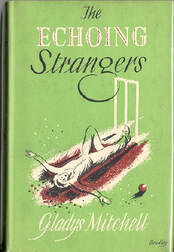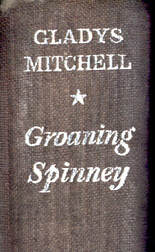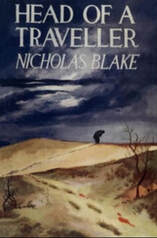
I have decided to take this approach: let’s keep the group reading of The Echoing Strangers (1952) for April. The group discussion – always lively and illuminating – will be available for all who want to contribute. Readers can send me comments on a section of the book every Wednesday, which I will organize and present for a weekend blog entry over at www.jasonhalf.com . The reading and response schedule is listed below.
This time I plan to take a step back as editor, however. Previously, much of my time was spent reading all the entries, then categorizing the comments into topics and carefully writing transitional text that allows me to quote each respondent in flowing paragraphs. I will still be very interested to read and group the comments by topic, but I choose to list each person’s writing separately with attribution, as you might find with a group interview. So the new format would be along the lines of:
THE TOPIC OF TWINS
Kitty T. – “Kitty’s thoughts.”
Ferdinand L. – “Ferdinand’s two cents.”
Laura G. – “Offering a new idea on the subject.”
This takes some pressure off of me while the contributors get a chance to share their views. There will also be few or no archival images to accompany the conversation, alas. Recent skirmishes and payment demands from holders of copyrighted images have discouraged the use of found photos, even as this post and discussion are presented for educational, non-profit purposes. Such distinctions don’t matter to Internet copyright trolls.
I still believe we can have a spirited group discussion of The Echoing Strangers, and I am excited to organize and contribute to the posts. If you want to send me your thoughts on each section (or if you just want to read the book and enjoy the comments of others), here is the timeline for April’s read. Thank you for understanding, and I look forward to learning what you think about this wonderful mid-period Mrs Bradley mystery!
Mitchell Mystery Group Reading Event – April 2023
THE ECHOING STRANGERS (1952)
Chapters 1 – 6, “Deaf and Dumb Alphabet” to “Mede”
Comments due Wednesday, April 5 for weekend post
Chapters 7 – 12, “The Questing Fairy” to “Castor and Pollux”
Comments due Wednesday, April 12
Chapters 13 – 17, “The Echo Under the Bridge” to “The Echo from the Past”
Comments due Wednesday, April 19
Chapters 18 – 21, “The Echo of a Crime” to “The Echo of Gemini”
Comments due Wednesday, April 26
Please email your comments about each section by the date listed to [email protected] . Try to avoid spoilers in your comments if you read ahead. Happy reading and I look forward to hearing from you!


 RSS Feed
RSS Feed